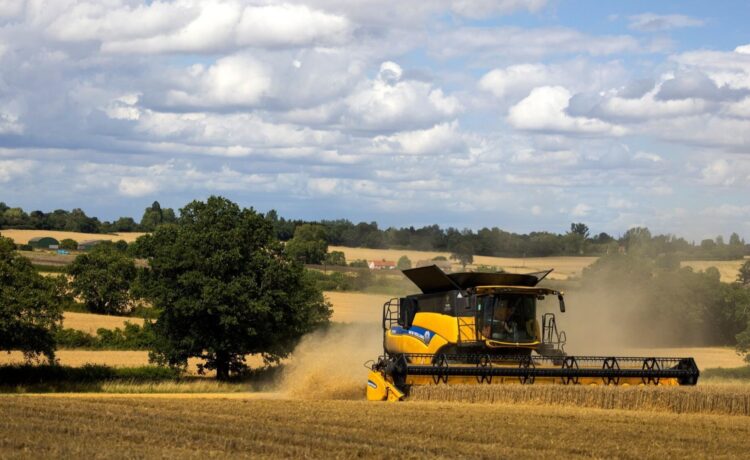Martin Lines is chief executive of the Nature Friendly Farming Network
Government and industry must work together to agree frameworks for farmers on carbon capture and biodiversity
UK supermarket Waitrose recently grabbed the headlines when it announced that by 2035 it will be sourcing all its British fruit and vegetables from farms that practise regenerative agriculture, while also working with suppliers to transition to more environmentally friendly working methods.
Far from a one-off event or a case of one company going above and beyond to showcase its green credentials, this move could well be a window into the near future for many British farmers.
For several generations, the model of how a farm like mine — an arable operation in Cambridgeshire, East Anglia — received its income changed very little.
There would be an area-based payment derived from the EU’s Common Agricultural Policy. I would receive some fairly small habitat payments for examples of environmental stewardship. And, there would be the money I received from the actual produce, the cereals I grew.
Faced with the climate and biodiversity crises, this situation is changing fast. As the concept of “public money for public goods” has rightly gained traction in farming policy, farmers are having to get used to the idea that food production is just one way to generate income, alongside managing areas of land for biodiversity and carrying out crucial tasks such as flood prevention and carbon sequestration.
But as made clear in the 2020 report “Financing nature: Closing the global biodiversity financing gap”, the price tag for investing in a truly sustainable farming transition is enormous, and public finances can only cover part of it. The funding gap means private finance is therefore not a “nice to have”, but an essential contribution to the process.
Fortunately, the private sector is increasingly looking to pay farmers for more than just food cultivating — as seen on supermarket packaging that carries messages about restored habitats and ingredients produced in a nature-friendly way.
Multinational corporations, meanwhile, are making sweeping promises to convert their supply chains to regenerative practices by 2030 or 2035.
Impact of Scope 3
Increasing environmental, social and governance scrutiny is a major reason for this shift, especially its expansion to encompass Scope 3 emissions, which makes companies accountable for the environmental impact of their broader supply chains, and is driving positive, corrective action. Companies are also increasingly nervous about their impacts on nature as biodiversity reporting starts to gather pace.
This change has massive consequences for food production. If a product contains meat, for example, Scope 3 emissions include the bought-in feed for the cattle — tracing it back, for example, to soya or maize that is being grown on the other side of the world, including on recently deforested land.
One way to reduce these emissions is to ditch inputs such as imported soya or maize and have cattle feed on grass from species-rich pastures. Rearing animals on locally grown feed makes both business and environmental sense.
Lack of standardisation
While UK companies are now acting on climate, following years of political inertia, this carries its own risks in the current unregulated market that sees policymakers lag behind fast-moving industries.
There are, for instance, few agreed standards or methodologies for vital aspects of nature-friendly farming, such as carbon sequestration, soil health or water infiltration rates. Instead, there are numerous carbon calculators that all give very different results.
For farmers, this means a baffling and sometimes contradictory set of tools, numerous data sets, and many forms to fill out to get payments from various sources. Such complexity may result in farmers burying their heads in the sand and focusing simply on food production — even as that becomes an unviable business model, as climate change tightens its grip and funding methods change.
There is now some agreement between leading auditors to look at standardisation. Furthermore, we urgently need government and industry to consider a joined-up framework for issues such as carbon capture and biodiversity gain, which can then be implemented across supply chains.
Without a holistic picture, separate and isolated measures to reduce emissions carry their own risks. Killing animals in a shorter timeframe to reduce methane emissions, for instance, could necessitate an increased amount of feed being bought in to ensure the animals reach the desired weight within that period.
Conventional farming businesses have also been built with huge amounts of infrastructure financed through borrowing. This now requires disinvestment to align with the new objectives, and there are questions around how this will be handled, especially with banks now scrutinising environmental impacts before lending.
At events, I have introduced myself as an asset manager of natural capital, providing a range of goods and services society wants; people sometimes need an extra nudge to realise this is a definition of a farmer. Indeed, in a few short years this may be the standard description for a farmer — but there is a huge journey from where we are today to get there.
















